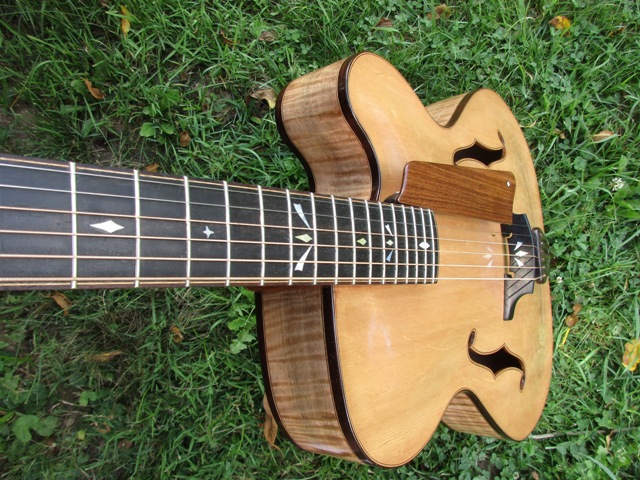 |
Ebony fingerboard and African blackwood bridge show off mother-of-pearl inlay of "bugles and diamonds" theme. Other rosewoods bind fingerboard and body, make tail-piece and finger rest. One-piece bridge delivers action and art with maximum tone. Spruce top, 35 years air dried, delivers tone while curly red maple radiates.
Some other links at the Hollow Road Guitar Shop, Chuck's Instrument Website:
|
| Featuring sitka spruce top, curly red maple back and sides, neck made of two-piece bookmatched mahogany sandwiching black rosewood center, East Indian rosewood bindings and tail piece, ebony fingerboard, African blackwood bridge, and Madagascar rosewood finger rest. Also featuring 33 pieces of mother-of-pear inlay, bound fingerboard and bound f-holes. This is my fourth carved archtop and first acoustic carved archtop. The first three electric carved archtops helped a lot toward understanding techniques and tone. |
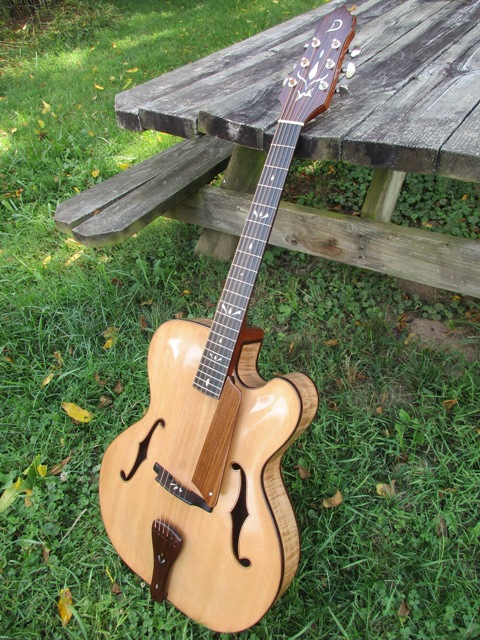 |
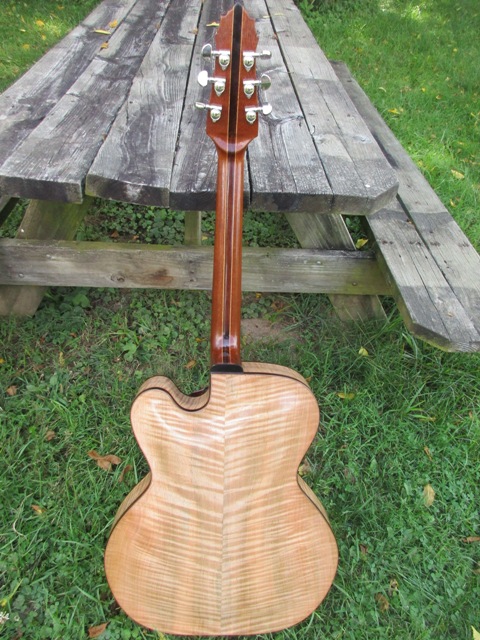 |
| Neck, below left, features black rosewood core sandwiched by maple purflings and bookmatched mahogany. The head is attached with a scarf joint and accented with a round volute. Two pieces of epoxy graphite reinforcement rod under the fingerboard help provide maximum stiffness with minimum weight for long life and acoustic sustain (see pic below). Fingerboard taper, radius and relief is all set by hand. A traditional dovetail joint attaches the neck to the body.
Mother-of-pearl inlay to the face, below right, completes the decoration theme that begins at the tailpiece. The rosewood faceplate accents well the MOP. Under the faceplate, a double laminate of maple veneer adds reinforcement to the scarf joint. |
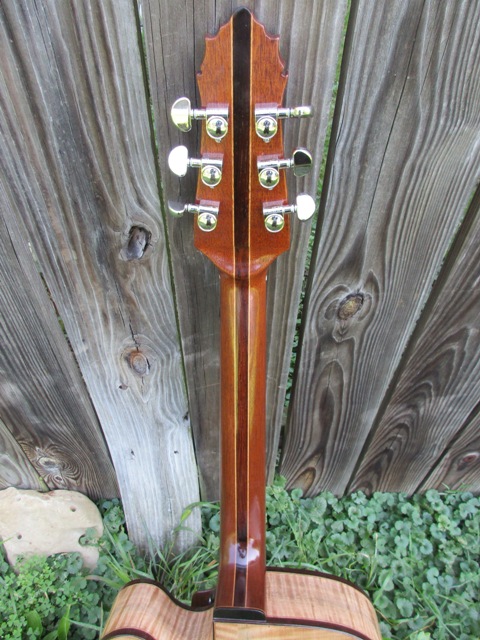 |
 |
| For bending the cutaway, curly red maple is less forgiving than harder woods (below left). In fact, books on bending the cutaway include how to best work with the fractures likely to occur. The rosewood bindings and overall effect of the curly mape definitely reward the efforts. Plus, for some players, the cutaway is a must need.
Below right, the rosewood bindings complete the tail and accent the bookmatched curly maple sides. Sarconi tail strap attaches the rosewood tailpiece, crossing a bone saddle at top's edge. The tailpiece is made of bookmatched rosewood and begins the inlay theme "bugles and diamonds". |
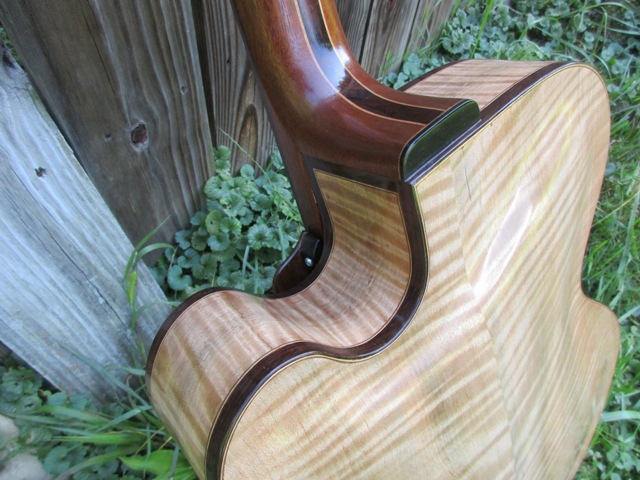 |
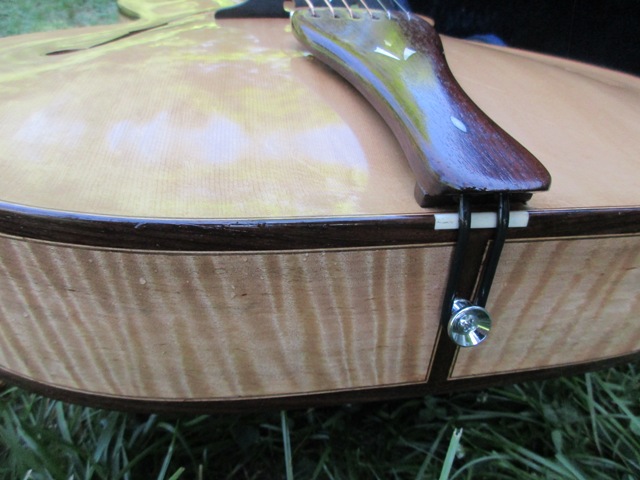 |
| Below left and under construction, note neck block, fingerboard extension and epoxy graphite reinforcement. Reinforcement rod begins above first fret. E-rod plus multi-piece neck provide maximum stiffness with minimum weight. Result is a slim and very playable neck.
Below right, note the recurve - that area around the perimeter of the back and top plates that is thinned to distinguish and allow the plates to vibrate. Note how the upper recurve of the back circumvents the neckblock area to help free up the back, especially for bass response. |
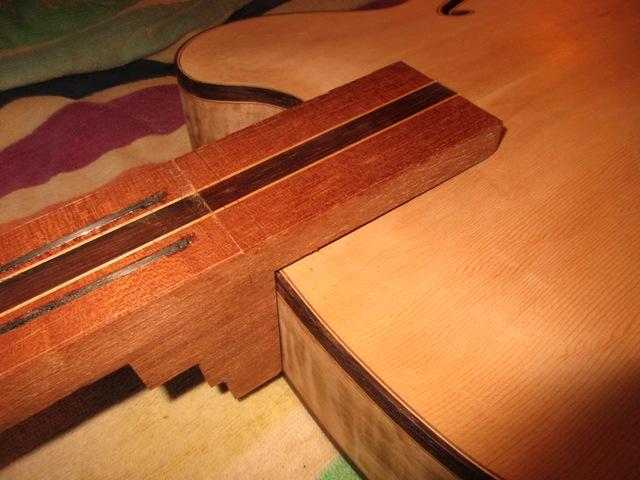 |
 |
| Interior view of top, below left. Note tone braces, side braces, about 100 tentelones (triangular pieces connecting sides to top), cherry kerfing connecting sides to back and mahogany neck and tail blocks. The interior is shellaced to inhibit moisture exchange. All surfaces sanded to the back side of 600 grit sandpaper.
Below right, close up of the treble F-hole. Robert Benedetto discusses how the size, shape, placement of the f-hole affects tone. These f-holes are built to the specifications in his book. Bindings add a classic touch to the guitar and help reinforce the f-holes. Check out the tight grain in the sitka spruce top. |
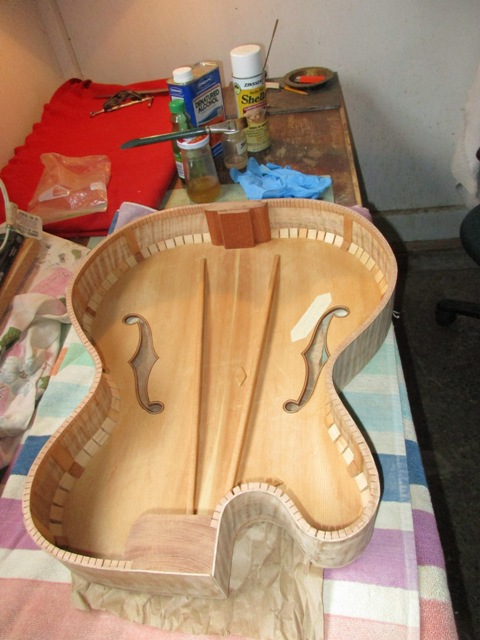 |
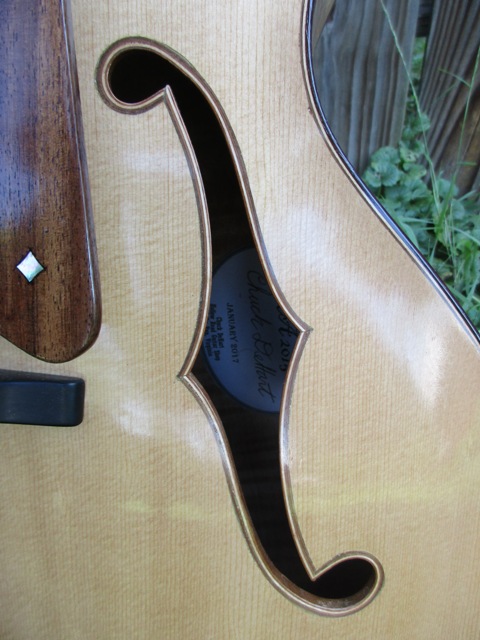 |